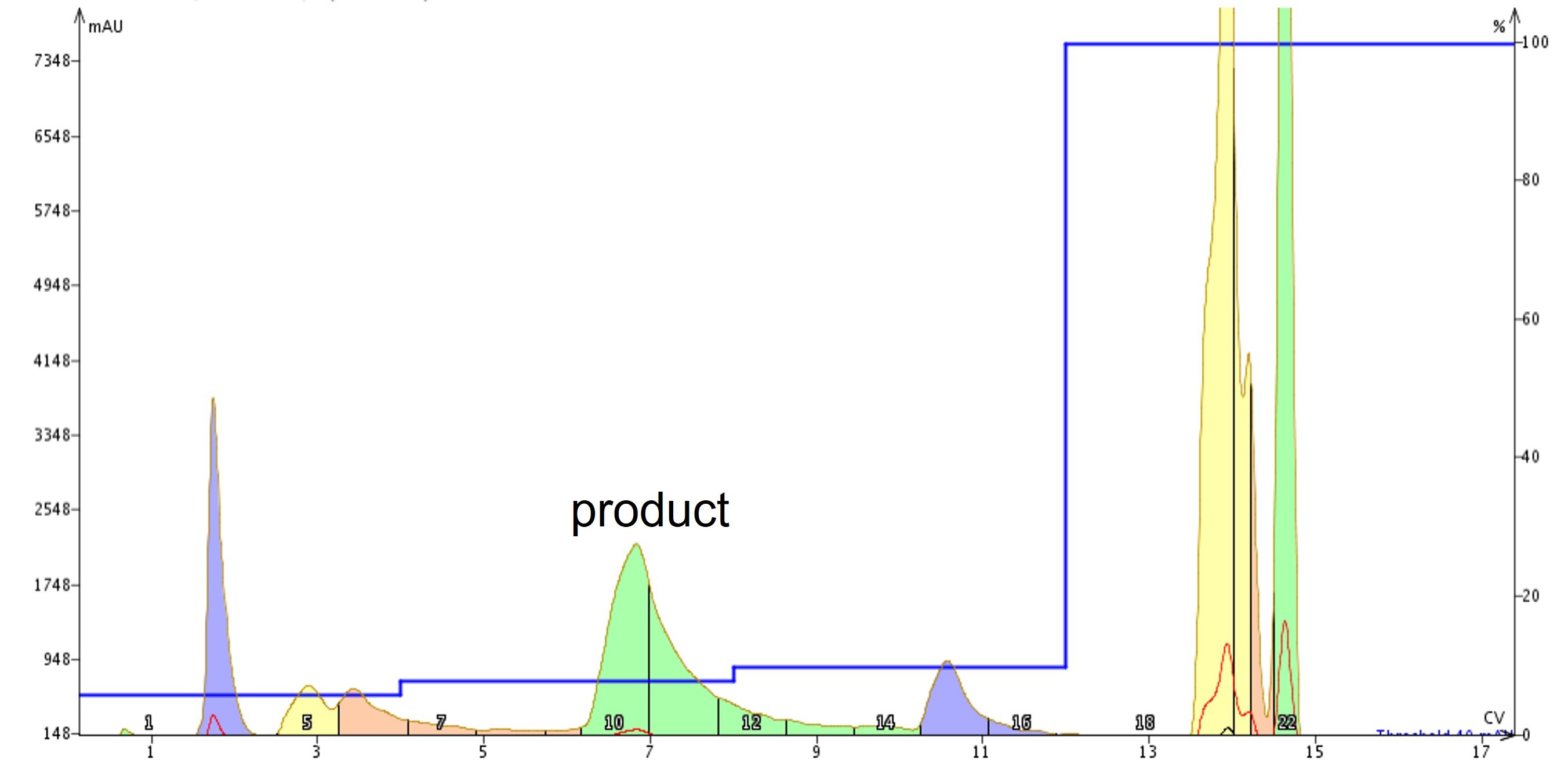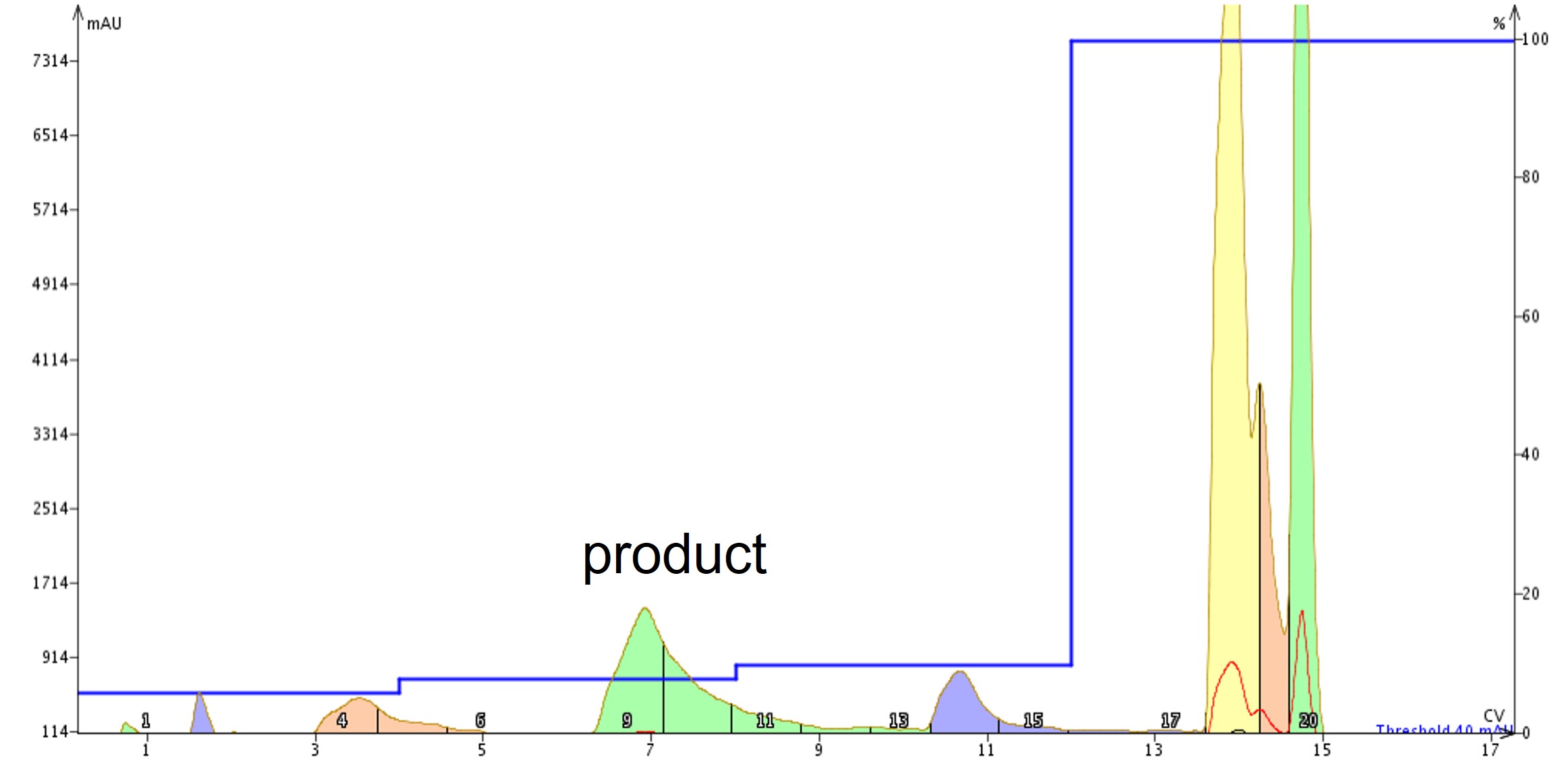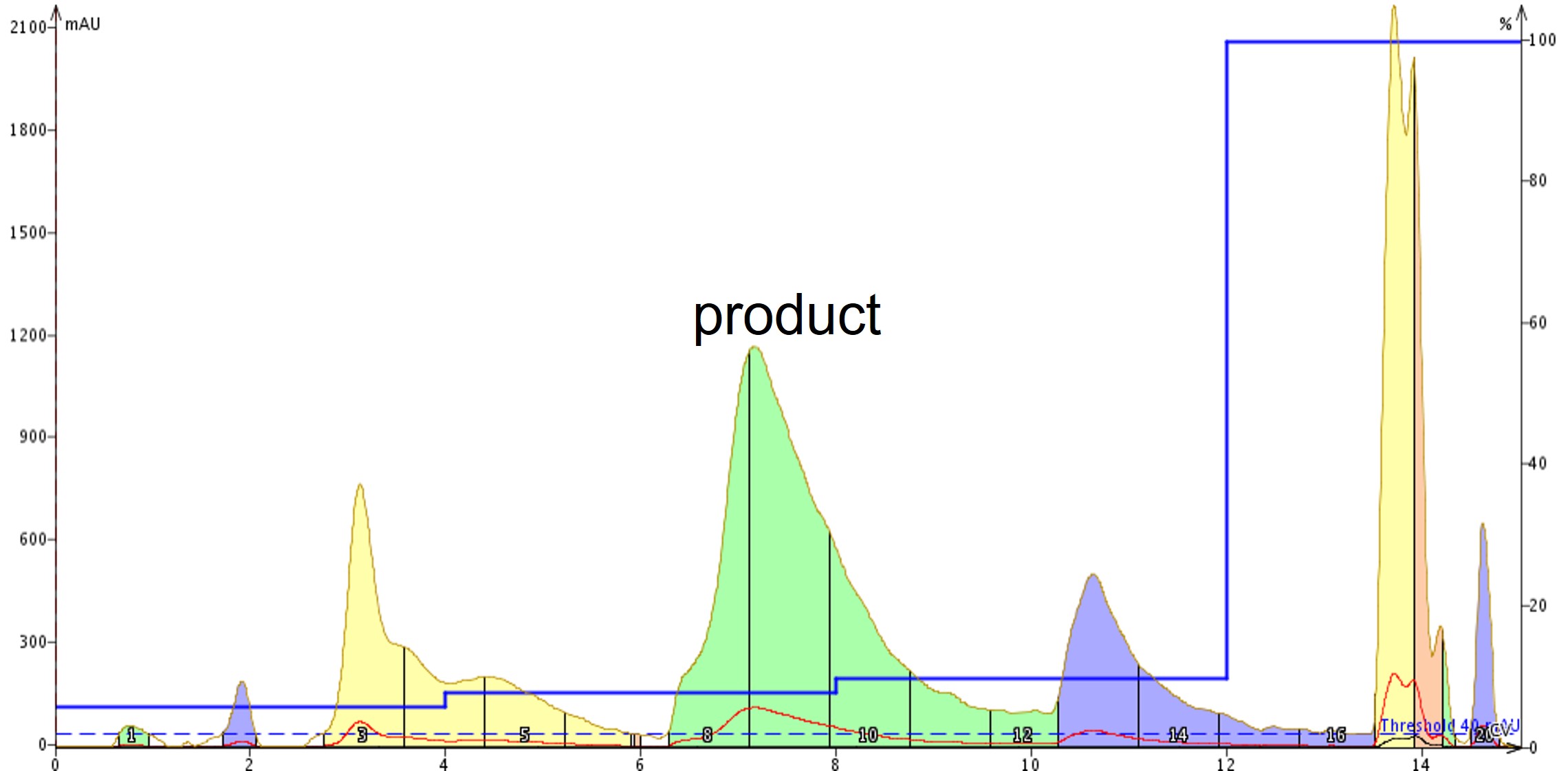Breakthrough during reversed phase purification often occurs for only a couple of reasons: 1) the dissolution solvent is too strong and prevents the compound from fully interacting with the stationary phase or 2) too much sample has been loaded onto the column. Peptides, particularly when part of a crude sample mixture, are known for their minimal solubility in aqueous conditions which further complicates purification efforts and often compromises recovery of purified material. This problem is further is exacerbated when the peptide of interest is small and contains polar amino acid(s), which often results in poor retention by the C18 stationary phase commonly used in peptide purification.
In today's discussion, I'll highlight an unusual strategy to address both solubility and retention, while decreasing the breakthrough that can occur during purification of these types of peptides.
Breakthrough during peptide purification, especially hydrophilic peptides, can compromise not only sample recovery, but also final purity and generally decreases workflow efficiency. Previously I have addressed alternative sample loading methods, injection solvents, and mobile phase modifiers that can potentially address this problem. Recently though, I was working with a relatively short (less than 10 amino acids) crude peptide containing no ionizable side chains that is VERY poorly retained by a C18 stationary phase and needless to say, a significant percentage of unretained (and therefore unpurified) material was unacceptable compromise to take.
The first challenge I encountered when working with this crude peptide was actually solubility. I cleaved the peptide from the resin and immediately evaporated the cleavage cocktail using my V-10 Evaporation system without ether trituration. This strategy, while significantly faster than the traditional method, leaves behind liberated sidechain protecting groups. This is often easily managed by simply dissolving the crude peptide sample in DMSO for purification via flash chromatography. Given the poor retention of the desired compound, DMSO was not an option as a dissolution solvent. I was surprised though, that the crude peptide sample was much less soluble than I would have anticipated. After evaluating a few different solvent conditions and reviewing some literature, I decided to dissolve the sample in 1:1 MeCN:water and give it a try, Figure 1.
 Figure 1. Optimized purification of a small, poorly retained peptide dissolved in 1:1 MeCN:water and liquid injected onto a 10 g Sfär Bio C18 column as a slurry.
Figure 1. Optimized purification of a small, poorly retained peptide dissolved in 1:1 MeCN:water and liquid injected onto a 10 g Sfär Bio C18 column as a slurry.
First and foremost, I used the term "dissolve" loosely. The sample loaded onto the column had an appearance more resembling milk than water - a slurry of small particulates reasonably well suspended in the liquid solvent mixture. While this would be catastrophic for a traditional HPLC system, the Biotage® flash purification systems and Sfär reversed phase columns aren't bothered by introduction of sample onto the column as a slurry. The biggest challenge that the slurry posed during purification method optimization was actually maintaining the suspension such that the sample load was consistent across multiple purification runs.
But now back to the chromatogram above. Despite an extended column equilibration (not shown), and an increased isocratic hold designed to improve sample retention prior to starting the actual mobile phase gradient, a significant amount of sample was identified in the injection peak, Figure 2.

Figure 2. Mass spectrum for optimized peptide purification. Positive TIC (blue) and negative TIC (red) indicate peaks generated by any detected ions at any time during the purification. Product extracted ion (purple trace) indicates presence of the desired peptide product at any time during the purification. Significant amounts of product are identified in the injection peak.
After this result, I decided to try dry loading the crude sample. This strategy works quite well in normal phase chromatography, especially when handling a sample whose components have wildly different solubility profiles. It has also been shown to improve peak shape, even with reversed phase purifications. With this knowledge in hand, I "dissolved" the sample in methanol (slightly better results than 1:1 MeCN:water, and much more volatile), evenly spread about 15 mg in 1 mL volume across a 1 gram Samplet™ cartridge, waited about 90 minutes, and re-ran the purification, Figure 3.

Figure 3. Purification using an optimized gradient with the crude sample "dissolved" in methanol, loaded onto a C18 Samplet™ cartridge and dried for 90 minutes at room temperature before performing the purification.
While the level of breakthrough was essentially eliminated, a different observation arose. Interestingly, a portion of the desired compound was actually over-retained and eluted in the multitude of peaks eluting in the final column flush, Figure 4.

Figure 4. Mass spectrum for peptide purification using a Samplet™ cartridge to load crude peptide onto a 10 gram Sfär Bio C18 column. Positive TIC (blue) and negative TIC (red) indicate peaks generated by any detected ions at any time during the purification. Product extracted ion (grey trace) indicates presence of the desired peptide product at any time during the purification. No product is observed in the injection peak, an improvement over the previous injection conditions. However, a significant amount of product is observed in the impurity peaks eluting in the final column wash (orange circle).
This is the only sample in which over-retention was observed out of eight different injections of this particular crude peptide sample, varying gradient and dissolution conditions. With this information, I suspect that the chromatographic difference is caused by the injection solvent. I'm honestly not really sure what could be causing this. It's possible the methanol is mediating an interaction between the desired peptide and the impurities leading to this outcome. It is also possible that the solid impurities deposited onto the Samplet™ cartridge trapped the desired peptide, preventing complete dissolution early in the purification and timely elution from the stationary phase. It's definitely weird though!
One thing that became apparent during preparation of purified fractions for analytical HPLC though that the desired compound alone is quite soluble in acidified water. So I decided to try one more thing. I suspended the crude peptide sample in water containing 0.5% TFA, vortexed and sonicated the sample, and re-ran the purification, Figure 5.

Figure 5. Purification using an optimized gradient with the crude sample suspended in acidified water prior to loading onto a 10 gram Sfär Bio C18 column.
Note - in this case I used the word suspended, rather than dissolved. Rather than a milky appearance, like that observed with the 1:1 MeCN:water solution, the crude peptide sample in water contained large, clumpy, somewhat sticky particles. The goal of extra vortexing and sonicating was to ensure that the sample particles were fully intercalated with water even if they weren't going to dissolve. Importantly though, the purification was successful. No desired product was observed in the injection peak, nor was there any product contained in the late eluting impurity peaks either, Figure 6.
 Figure 6. Mass spectrum for peptide purification wherein the crude peptide sample was suspended in acidified water prior to loading onto a 10 gram Sfär Bio C18 column. Positive TIC (blue) and negative TIC (red) indicate peaks generated by any detected ions at any time during the purification. Product extracted ion (purple trace) indicates presence of the desired peptide product at any time during the purification. No product is observed in the injection peak nor coeluting with the impurity peaks at the end of the purification.
Figure 6. Mass spectrum for peptide purification wherein the crude peptide sample was suspended in acidified water prior to loading onto a 10 gram Sfär Bio C18 column. Positive TIC (blue) and negative TIC (red) indicate peaks generated by any detected ions at any time during the purification. Product extracted ion (purple trace) indicates presence of the desired peptide product at any time during the purification. No product is observed in the injection peak nor coeluting with the impurity peaks at the end of the purification.
For this particular crude peptide sample, purifying the crude peptide sample as a suspension resulted in the highest purity and also the highest recovery. This technique, and ultimately results, would not have been possible using a traditional HPLC setup.
To learn more about using flash purification for peptides and how it can decrease your purification time, click the link below.

